Whatever the size or segment of an industry, good management of industrial processes is essential to keep productivity up and speed up yields. The main objective of an effective management is to avoid failures in the production stages, anticipating the eventual bottlenecks and investing in more modern solutions to correct them.
In this way, the manager can optimize the production chain and, at the same time, ensure the quality of life of employees in the plant, since they can count on more effective tools in their day-to-day work. This is also related to industrial sustainability, since optimized processes are also more economical and sustainable.
Want to know more about it? Keep reading and understand the real importance of an assertive management of industrial processes!
What is industrial process management?
Industrial process management is just one of the basic departments of the factory. It is up to the professionals responsible for this management to define the best methods of operation for the success of the industry. Planning, modeling, analysis and measurement of results are some of the priority requirements in this sector, always with the aim of correcting failures and replicating successful management patterns.
Among the basic demands of industrial process management we can highlight:
- Definition, manipulation and logistics of raw materials;
- Adaptation to innovative methodologies that match the industry;
- Conditioning functions to transform the raw material;
- Separation of the raw material to transform it into product;
- Execution of the final products with maximum quality.
Each of these steps of the production line requires specific actions and strategies, which require support from machinery, tools, and equipment necessary for the final product to correspond to what was planned. The major function of industrial process managers, therefore, is to keep the entire production chain running according to the expectations and priorities of the institution.
What is its importance and impact for industrial warehouses?
There is no way to obtain satisfactory results without effectiveness in the management of industrial processes. Only through predefined steps will it be possible to ensure fluidity in the corporate routine and budget control in relation to operations. Not by chance, the main impact of a successful management is the increase in the level of competitiveness of the industry in the market, which ensures its survival.
This is why managers are increasingly concerned with optimizing internal processes to ensure their own credibility in the business, as well as scalable growth. After all, a well-managed production line is also more agile, economical, sustainable, and profitable.
How do you know if the processes are being efficient?
To make sure that the industrial processes are efficient, the manager should start by detailing the details of each operation. Thus, he will be able to better see the costs involved in the production chain and how often he needs certain resources, for example. For you to better understand how it works, we explain below the aspects that should be prioritized in this analysis.
Map the operations
Start by gathering all data related to the execution of industrial tasks. Use these indicators to define a flowchart of activities and then clearly see the most relevant information of the production line, such as execution time of certain tasks, necessary inputs and employees involved. With this data properly mapped, it is easier to visualize the possibilities for improvement in the industrial process.
Perform the modeling
Modeling is one of the most detailed tasks in industrial process management, because it includes the graphical representation of the production line. This type of "drawing" is structured so that everyone involved can understand the path that each material takes in the production chain, which activities the inputs go through, and who is responsible at each stage. In this way it is possible to understand why certain results have been achieved.
Identify opportunities for improvement
If the results are below plan, your mapping and modeling are probably signaling operational failures that can be corrected. At this point in the analysis, try to highlight the following aspects in an attempt to correct the bottlenecks:
- What are the mistakes that have been generating inefficiencies?
- Is there any waste of material or resource at any stage of the process?
- Are there repetitive steps that only burden the industry and do not generate results?
- What improvements can be proposed in the short, medium, and long term?
Implement the necessary adjustments
Now that the possibilities for improvement have been raised, it is time to implement the necessary adjustments and test new strategies. Take advantage of this moment to make employees aware of the importance of change and try to prioritize tangible goals. Thus, the team will remain motivated to abandon old habits and seek better results.
Follow up through monitoring
Monitoring is a decisive step for the success of industrial process management. Not least because there is no way to know if the corrections will be effective without frequently evaluating the implementation of new directions. Define the regularity of this analysis and make sure to keep your team aligned, because the assessment of the group's performance indicators helps to substantiate the manager's feedbacks.
Manage industrial processes in 3 steps
Now let's go to the 3 practical steps of the execution stage of new operational strategies.
Pre-implementation
Define the scope of the project, considering all the information gathered in your strategic mapping and modeling. Make clear the goals that each team should follow, preferably establishing short, medium and long-term objectives.
In this way, as the results emerge, the motivation of the group will also increase, thus feeding a promising cycle of performance. You can draw on the following factors to define this advance planning:
- What is the need for each department on the production line?
- What should be a priority in the scope of industrial processes?
- What are the inputs that trigger each stage of the production chain?
- What are the intended goals and the results that are to be achieved?
Implementation
With the above criteria well defined, it is time to get the scope down on paper. The clear and didactic sequence of the planning helps guide the group and keep the focus on priority activities. However, don't forget that monitoring and audits need to be constant to validate the new management strategies.
Reimplementación
The reimplementation stage dialogues with what we said earlier about monitoring processes. Define how often this analysis will take place - according to the degree of demands and urgencies of the industry - and evaluate the operations based on a constructive dialog with your team.
Use the performance indicators to support the feedbacks that will be passed on to the group and, whenever possible, try to replicate the successful patterns, reimplementing in other sectors the strategies that have already worked.
MB Smart: automation for industrial process management in more efficient warehouses
Automation is one of the greatest allies of industrial process management. Nowadays, with the many advances of Industry 4.0, it is already possible to monitor operations with more clarity and from the reliability of statistics.
Another advantage of automation is the fluidity of the corporate routine and the control of operational resources. Intelligent solutions such as daylighting domes and MB Smart, from MB Group, come out ahead in this aspect by combining electricity savings, strategic lighting and visual security for employees in the factory.
The MB Smart works as an intelligent control center that manages all the lighting resources of the factory, helping to promote energy efficiency and sustainability in the industry. With this feature, it is possible to control the lighting flows of all departments in the shed, sizing the LED lamps according to the levels of natural light entering through the domes.
In addition, the central unit programs the automatic turning on/off of the LEDs to avoid common problems in the factory, such as forgetting to turn on the lights after work. In other words, in terms of economy, functionality and practicality, the MB Smart is an indispensable solution for a more efficient industrial process management.
Want to understand better how it works? See the relationship between MB Smart and sustainability for the future of the industry!
Below, we summarize the main advantages and differentials of this intelligent center:
- Automatic dimming of LED lamps;
- Maximum energy savings for the plant;
- Creation of customized lighting flows;
- Comfort and well-being in the workplace;
- Sustainability and energy efficiency for industry;
- Generation of performance indicators for the power plant;
- Assertive management of industrial processes.
All these features and benefits make MB Smart a great partner in your innovative management project and aligned with the sustainable values of Industry 4.0.
If you have any questions about MB Smart or want to know more about the smart center, talk to one of our consultants and be amazed at what this technology can do for your plant!


